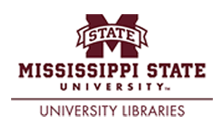Residual and Sequential Herbicide Treatments in Dicamba-Resistant Soybean
ORCID
Bond: https://orcid.org/0000-0003-2689-608X; Allen: https://orcid.org/0000-0003-2828-3420; Eubank: https://orcid.org/0000-0002-3369-3961
MSU Affiliation
Delta Research and Extension Center
Creation Date
2025-11-14
Abstract
Dicamba-resistant soybean was developed and commercialized by Monsanto in 2016, and in recent years, barnyardgrass has become more troublesome for growers who use residual herbicides with dicamba technology. Field studies were conducted from 2019 to 2021 in Stoneville, Mississippi, to evaluate barnyardgrass control after applications of glyphosate or glyphosate + dicamba, when mixed with residual herbicides, and when applied sequentially. In the first field study, glyphosate (1,120 g ae ha−1) and glyphosate + dicamba (560 g ae ha−1) were applied in combination with common residual herbicides. The second field study included an initial treatment with glyphosate (1,120 g ha−1), glyphosate + dicamba (560 g ha−1), and glyphosate + dicamba + S-metolachlor (1,064 g ai ha−1) followed by a sequential treatment of glyphosate or glyphosate + dicamba at 3 and 7 d after an initial herbicide treatment. Results indicated that glyphosate alone provided greater barnyardgrass control than glyphosate + dicamba. Additionally, at 28 d after treatment, pyroxasulfone, pyroxasulfone + fluthiacet, dimethenamid-P, and S-metolachlor did not affect postemergence control of barnyardgrass after glyphosate + dicamba treatments. Furthermore, sequential herbicide treatments of glyphosate or glyphosate + dicamba led to no difference in barnyardgrass control 28 d after the sequential treatment. These results indicate that options exist for adding residual herbicides to glyphosate + dicamba treatments and that sequential treatments of glyphosate or glyphosate + dicamba are important for optimizing barnyardgrass control.
Publication Date
10-20-2025
Publication Title
Weed Technology
Publisher
Cambridge University Press
Creative Commons License

This work is licensed under a Creative Commons Attribution 4.0 International License.
Recommended Citation
Bowman H, Bond JA, Allen T, Eubank T, Kelly FR. Residual and sequential herbicide treatments in dicamba-resistant soybean. Weed Technology. 2025;39:e99. doi:10.1017/wet.2025.10054


